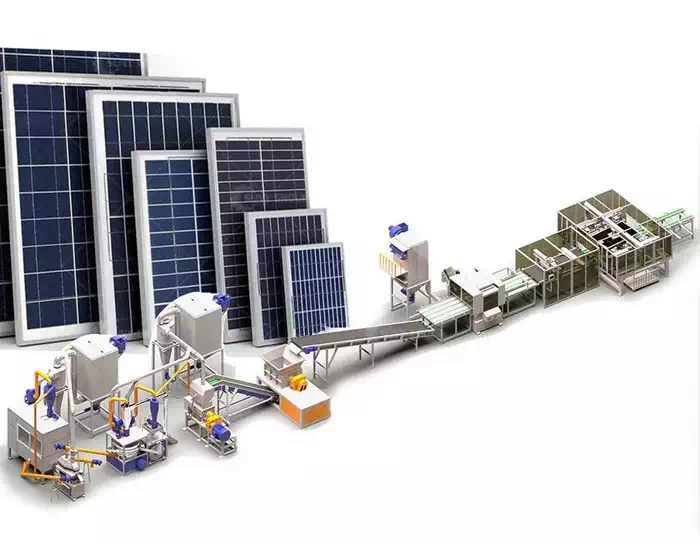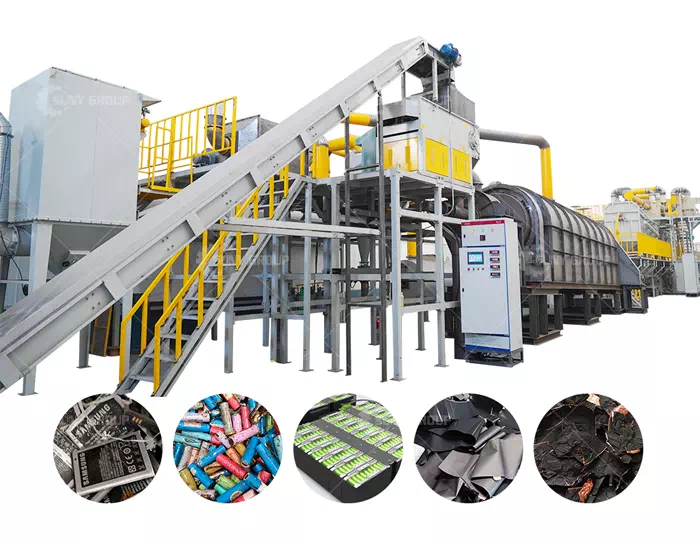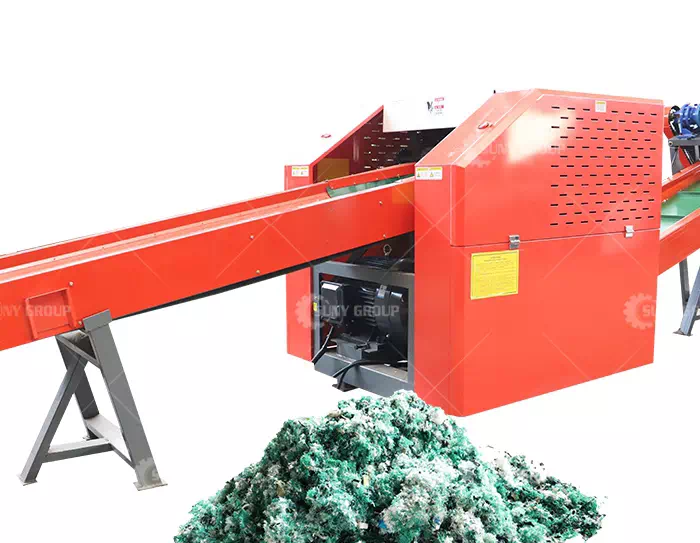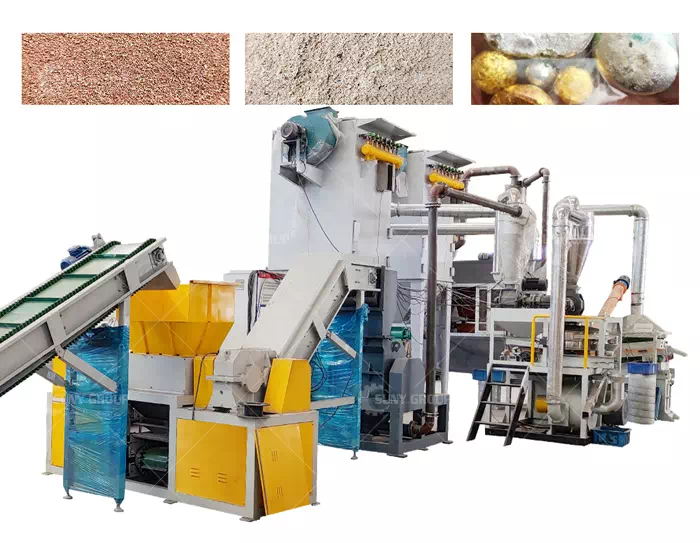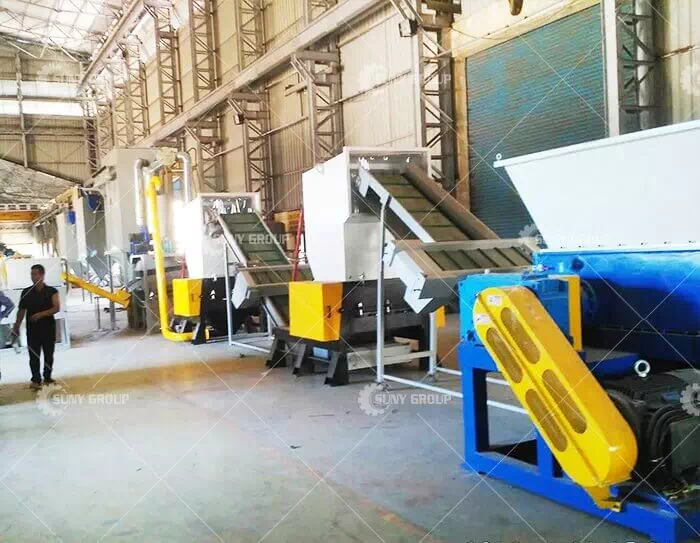What technology is used to recycle lithium-ion batteries?
With the widespread application of lithium batteries, lithium-ion batteries have become an indispensable energy medium in our daily lives. However, a large number of used lithium-ion batteries have caused serious pollution to the environment and wasted resources. To solve this problem, scientists are working to develop and improve technology for recycling lithium-ion batteries. SUNY GROUP will introduce in this article the technologies and equipment currently widely used in lithium-ion battery recycling, as well as their advantageous features.
1. Mechanical crushing and sorting technology:
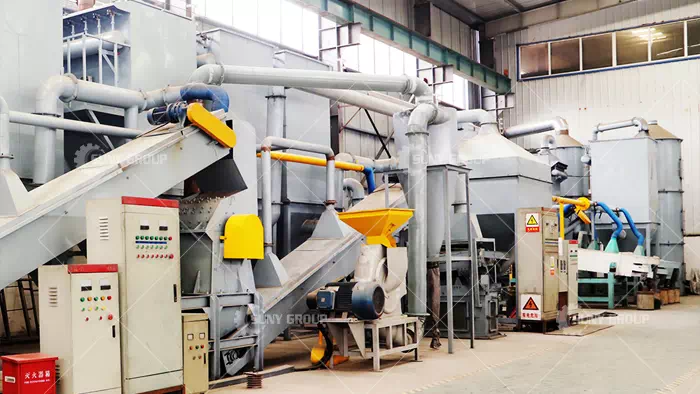
Lithium battery mechanical crushing, sorting and recycling technology equipment
Mechanical separation is a commonly used lithium-ion battery recycling technology. This technology uses physical means to dismantle and separate used batteries to recover valuable materials. Mechanical separation technology mainly includes the following steps:
Disassembly: Used batteries are first disassembled into their component parts, including positive electrode materials, negative electrode materials, electrolytes and separators.
Crushing: The disassembled battery components undergo a crushing process to finely break them into small particles for subsequent processing.
Separation: Separating valuable materials in fragments from other impurities through physical separation methods such as screening, magnetic separation, and gravity separation. Cathode materials, anode materials and metal parts can be recycled in this way.
The advantages of mechanical separation technology are its high efficiency, reliability and low cost; it is also one of the current mainstream lithium battery recycling methods.
2. High temperature carbonization recycling technology:
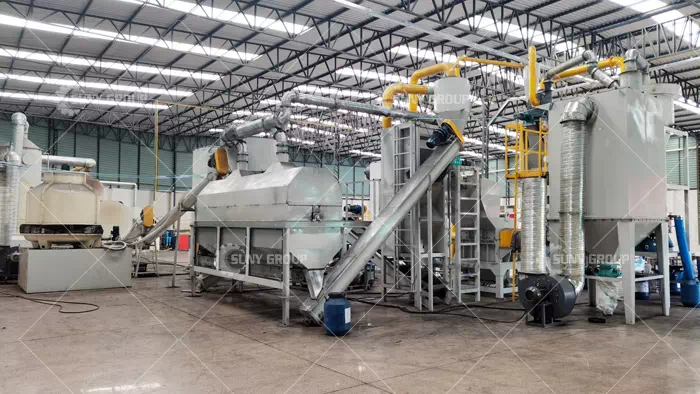
Lithium battery high temperature carbonization recycling technology equipment
High-temperature carbonization recycling technology is another common lithium-ion battery recycling method. This technology separates valuable materials from used batteries through high-temperature processing. The steps of smelting recycling technology are as follows:
Crushing: Used batteries are first broken into small pieces for subsequent processing.
Drying: The chips undergo a drying process to remove moisture and volatile materials from them.
Roasting: The chips are roasted in a high-temperature furnace to break down the organic matter and electrolyte in the battery.
Smelting: The roasted residue is passed through the smelting process to separate the metallic materials. These metal materials can be used to produce new batteries.
The advantage of high-temperature carbonization recycling technology is that it can recover a variety of valuable metals in batteries, such as lithium, nickel, cobalt and copper.
Recycling lithium-ion batteries is an important measure to solve environmental pollution and resource waste. Mechanical separation and high-temperature carbonization recycling are currently widely used technologies. Mechanical separation technology is efficient and reliable, and the cost is relatively low. High-temperature carbonization recycling technology can recover a variety of valuable metals, but has higher equipment requirements. As a professional manufacturer of scrap lithium battery recycling equipment, SUNY GROUP has rich experience and complete technical equipment. If you need it, you can consult us at any time.
Recommend products
CONTACT US:
If you have any requirement or suggestion, please fill in the form and send to us, thanks!E-mail:sunymachine@gmail.com | Whatsapp:+8613674945231


